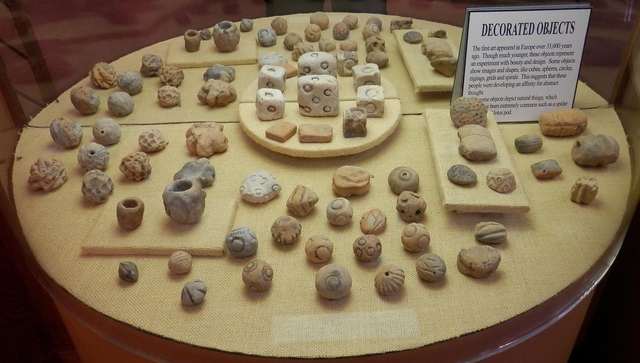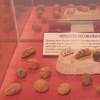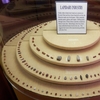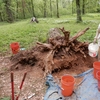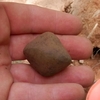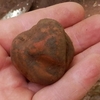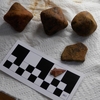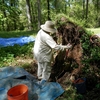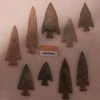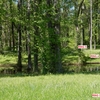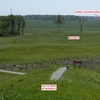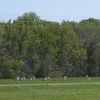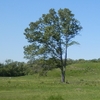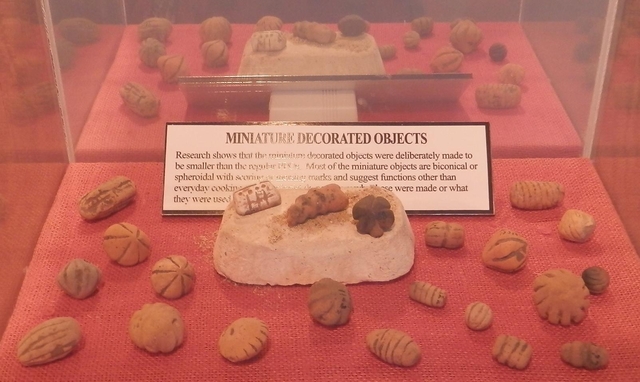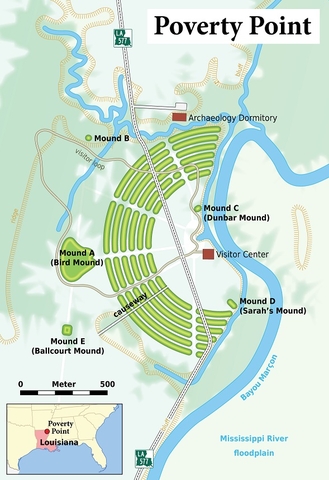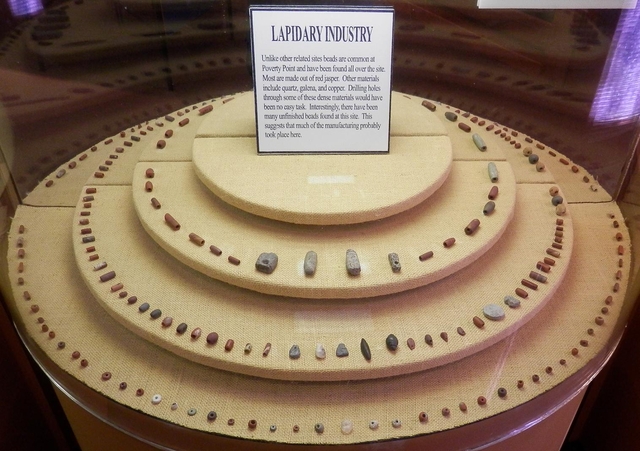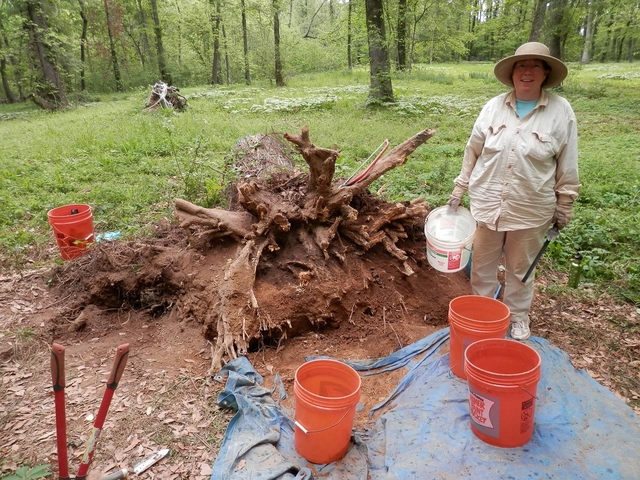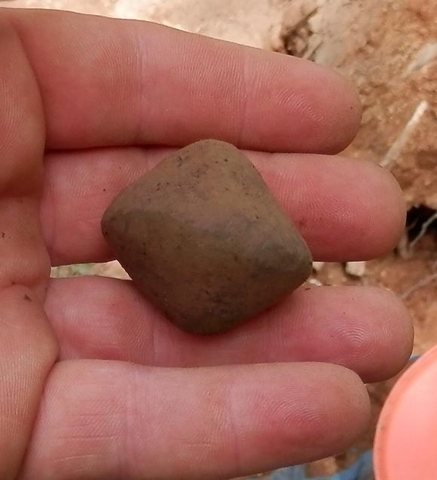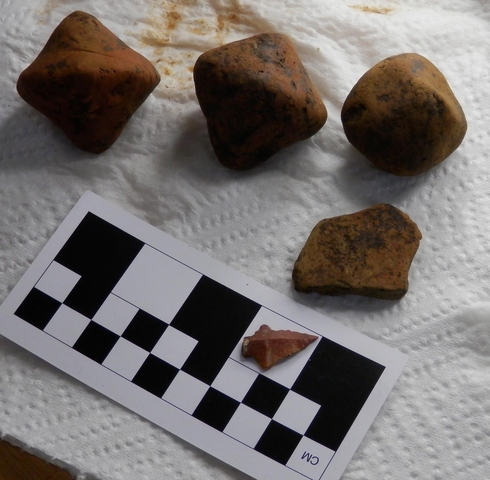
Bullethead
ELITE MEMBER-
Content count
2,578 -
Joined
-
Last visited
-
Days Won
2
Content Type
Profiles
Forums
Calendar
Gallery
Downloads
Store
Everything posted by Bullethead
-
Given the number of dog-related threads here, it's hard to avoid the impression that being a dog person is almost a requirement to play OFF. But even though I have a dog that I like enough not to kill when it comes home after rolling in manure, I'm more of a cat person. I reckon there are others out there, lurking in the bushes at the edge of the campfire. So if you're a cat person, let's see your felines. This is my main man, Tempestofelis omnimortifer, aka Hurricane Gustav of "Gus". He's about 3.5 years old and got his name because that storm blew him into my yard as a lost, starving kitten. You'd never know that looking at him today, resplendent in his winter coat. He weighs 15 pounds, most of which is solid muscle from wrestling the dog every day. He's extremely friendly, has an insatiable curiosity, but is head of the household and kills everything he finds in the yard: birds, rodents, snakes, lizards, and bugs. Other cats as well on occasion. This is Panthera browningii, Browning (after the gunmaker) or "Brownie" for short. She's about 7.5 years old and about 10 pounds. Despite having been raised from a kitten at my house, she's still as feral as when I plucked her out of a friend's barn. She likes to sleep indoors at night but the rest of the time stays out hunting. She's not friendly, usually has a pissed-off expression, and uses more cursewords than I do. For instance, while she does like being petted, she spits and growls instead of purring. "Talk dirty to me, baby." Gus and the dog occasionally try to converse or play with her, but she'll have none of it, so most of the time they just ignore her, which apparently is how she likes it.
-
A friend of mine pointed this out to me the other day: War of the Worlds: Goliath http://www.wotw-goliath.com/ The idea is, after the failed Martian invasion in 1899 (covered in the HG Welles book), Earthlings rebuilt and reverse-engineered at lot of captured Martian equipment. This created a steampunk world, defended against the expected Martian 2nd attempt by an international force. Well, the Martians show back up in 1914 for a rematch. And guess who's leading the Earth air force? MvR :). Anyway, might be of interest to some.
-

OFF2 DEVELOPMENT Screenshots
Bullethead replied to Polovski's topic in WOFF UE/PE - General Discussion
So, when do you start accepting money? -
I like it too Very impressive! The SPAD is a bitch to skin due to its incredible number of ribs everwhere, plus various details requiring delicate work. You managed it extremely well
-

OT--MvR in Steampunk Animation
Bullethead replied to Bullethead's topic in WOFF UE/PE - General Discussion
My main problem with MvR being the air force leader is that Boelcke would still have been alive and the better man for the job. But I guess nobody beyond us air combat aficionados has ever heard of him these days. Anyway, glad to see some other anime fans here. My own personal favorites are: Cowboy Bebop: http://en.wikipedia.org/wiki/Cowboy_Bebop Rin: Daughters of Mnemosyne: http://en.wikipedia.org/wiki/Mnemosyne_(anime) Trinity Blood: http://en.wikipedia.org/wiki/Trinity_Blood Legend of the Galactic Heroes: http://en.wikipedia.org/wiki/Legend_of_the_Galactic_Heroes and, just because... Dragonball Z: http://en.wikipedia.org/wiki/Dragon_Ball#Dragon_Ball_Z -

OT: Avro Lancaster Squadron markings.
Bullethead replied to itifonhom's topic in WOFF UE/PE - General Discussion
With the roundel that far forward, did they have the opposite problem? -

OT: Avro Lancaster Squadron markings.
Bullethead replied to itifonhom's topic in WOFF UE/PE - General Discussion
Just remember that the plane was only AR-P on the left side. On the right side, it was P-AR, because there wasn't enough room between the roundel and the tail for 2 letters. -

WW1 aircraft structure questions
Bullethead replied to Buddy1998's topic in WOFF UE/PE - General Discussion
I'd like to add a bit on the behavior of engines. In general, I think inline engines were more likely to fail and rotaries more likely to burn. On the subject of failure, inline engines were more likely to be hit because they were bigger targets. A rotary is a thin disk, presenting its largest area to front and rear and very little to the sides. And that's all there is to it. An inline, OTOH, has about the same front/rear area, plus is even bigger to the sides. And then there's the cooling system, which adds another fairly large target area, although this varied considerably between engines. Hissos had the radiator on the front of the engine so it only added a little extra target area, and arguably made no difference because bullets hitting it would probably hit the engine itself anyway. OTOH, German radiators in the upper wing definitely added a lot of extra target area. On the subject of fire, rotaries were by nature rather hazardous. If throttled by cutting ignition to some number of cylinders, the other cylinders were still receiving their mix of air and fuel and spewing it unburned out the exhaust valves along with the castor oil. This tended to keep the inside of the cowling dripping with a mix of oil and gasoline, just waiting for an excuse to ignite. Castor oil doesn't burn that well and gasoline evaporates quickly in high winds, so most of the time rotarties got away with this. However, it was not unknown for them to catch fire spontaneously, and some engines did this quite frequently. The Gnome 160 was so bad about this that the French dumped all planes designed for it, which is how the US ended up with all the N28s and why the otherwise very good MS-AI was only operational for a few weeks. Damage, of course, could make this situation much worse... -
I spent this past week crossing off an item that's been on my bucket list since I was about 5 years old: doing real archaeology. I was doing volunteer work at a placed called Poverty Point, an ancient Indian site up in the NE corner of Lousy Anna near the town of Epps. It was a GREAT time; the work was fun and I learned a lot about something I'm very interested in. So, if you're the least bit archaeologically inclined, hit up the archaeologists at some site you fancy and ask if they need help. That's how I got into this. For them as don't know, Poverty Point is a very significant site for a lot of reasons. The most interesting thing about it is that it was the 1st place in the world where it was recognized that hunter-gatherers (or in this case, fisher-gatherers) could find enough food within walking distance of home to settle down, have a population explosion, and build a city with massive public works, monumental architecture, etc., with dedicated artisans cranking out jewelry and such non-essentials. Since Poverty Point broke the agriculture-before-cities paradymn, a few other such sites elsewhere in the world, and considerably older, have been found, but Poverty Point was what opened people's eyes to see them. And regardless, such sites are extremely rare worldwide. Anyway, Poverty Point dates to the Late Archaic period, about 1500 BC. That was long before North America went agricultural. The site is huge; the current park, which doesn't include all of it, is about 425 acres. The site consists of 6 concentric ridges and 5 or 6 mounds, plus outlying suburbs. The ridges have a diameter of 3/4 mile and surround a 37-acre plaza with most of the mounds outside this. The Indians built their hootches atop the ridges and they figure about 2500 of them live in the city itself with about the same number in the Greater Poverty Point area. Here's a map of the park. The ridges themselves are very low these days (the land was plowed for a century or 2 recently) and hardly visible on the ground, but you can see them quite clearly in Google Maps or Google Earth. I spent the last week living in the dorm at the top. There's another mound (Motley Mound) outside the park about where the "v" in "Poverty" in the title is. There's also another mound about 2 miles to the south, also on private property, but it's about 1500-2000 years older than Poverty Point. This is Mound A (aka "Bird Mound"). When built, this was the largest man-made structure in the Western Hemisphere and is still the 2nd largest Indian mound ever, surpassed only by the much later Monks' Mound at Cahokia. It's about 750' x 640' x 72' and is supposed to have beem about 100' tall originally. According to recent core samples, it was built in about 90 days. And this by hand-carried baskets of dirt: no metal shovels, no draft animals, not even wheelbarrows. And this was AFTER they'd filled in a pre-existing depression under it. This, plus the other mounds, and 7.5 miles of ridges, and all the grading and filling needed to level the area beforehand, adds up to a phenomenal amount of dirt being moved. It really puts things like Silbury Hill in the shade. The Poverty Point folks had absolutely zero rocks so imported everything. The dart points above were made of rock from the Middle Ohio River Valley, the beads from rock and shell from all over what is now the eastern US. Apparently most of these goods moved by boat along the rivers. The interesting thing is, there's no evidence of Poverty Point exchange goods where the rocks came from. So, either the Poverty Point folks traded in perishable items (hard to imagine what in the days before refrigeration) or they just went and took what they needed. That would have been possible; the could put by far the largest army in the field, as they were by far the largest population center of the time. But anyway, I was out digging stuff up. It was pretty exciting. 1st thing when I got there, they issued me a bullwhip, which came in handy when some Nazis attacked just before lunch, looking for the Lost Ark or whatever . Actually, the only combat was with the clouds of mosquitos. Amazingly, I only saw 1 snake the whole time I was there. What I was really doing was picking through the dirt between the roots of a fallen tree. This tree had been growing atop one of hte ridges so when it fell, it pulled up a big wad of dirt with all sorts of artifacts mixed in. My job was to salvage as much of this stuff as possible, under the direction of 2 staff archaeologists. Here's the tree before and after. The lady in the pics is Fran Hamilton, the Regional Archaeologist for NE LA. When we started, the highest point of the dirt was about eye level with me. Being the tallest, I got to dig in the center section. This area turned out to contain an old BBQ pit. The Poverty Point folks had an interesting way of cooking. They made balls of various shapes and sizes out of the dirt, fired them into a type of pottery (called Poverty Point Objects or PPOs), then heated them up and used these hot balls to bake their food in another hole nearby. Thus, by far the most common artifact there is PPO fragments, sometimes intact PPOs. So, my hearth area was crammed full of PPO fragments. We did find some other cool stuff, though. On the left side, apparently somebody had once sat beside the fire chipping flint. Thus, the archaeologist digging there found a lot of chips, fragments of points, and knapping tools. Here are some of the cooler things we found: Across the top are 3 intact biconical PPOs, rather smaller than usual. In the middle is a potsherd, and on the checkerboard card is an actual intact arrowhead. Both the potsherd and the arrowhead are from the Coles Creek Culture of about AD 500. So despite being 1500 years old, they're still young compared to the PPOs, which are about 3500 years old. The Coles Creek items indicate squatters amongst what were already ancient ruins even back then; they had nothing to do with building the place or participating in the Poverty Point Culture. Note the tiny size of the arrowhead, not quite filling a 2cm square. That's typical of true arrowheads. Bigger things are usually either dart points or knives, maybe spearheads. See, the bow and arrow didn't arrive in this part of the world until about AD 500, before which folks used the atlatl and dart. IOW, that point was a new-fangled invention when it was new. Anyway, I had a blast and learned a lot. I highly recommend volunteering to help archaeologists.
-

OT - Working at Poverty Point
Bullethead replied to Bullethead's topic in WOFF UE/PE - General Discussion
I hope you at least took some pics :). Sounds like a great summer vacation. How'd you get the opportunity? We had a branch of the vast Hopewell family down thisaway, the Marksville Culture. I think they're responsible for at least some of the mounds in my neighborhood, although the later Troyville and Coles Creek folks were here as well. -

OT - Working at Poverty Point
Bullethead replied to Bullethead's topic in WOFF UE/PE - General Discussion
I'm also quite interested in the Anasazi. What intrigue me most is what sort of large-scale organization was going on in Chaco times, and also the extremely traumatic period that followed its collapse. I recommend Prehistoric Warfare in the American Southwest by Steven LeBlanc. http://www.amazon.com/Prehistoric-Warfare-American-Southwest-LeBlanc/dp/0874805813 Thing is, there wasn't 1 mound-building culture, there were a bunch of them, often with wide gaps between them both in time and in space. Also, different cultures built mounds of many different designs and used them for different purposes. Eventually, the idea went mainstream so that by a few centuries before Contact, pretty much everybody east of the Mississippi was doing similar things simultaneously. But even then, it wasn't a monolithic cultural block as originally supposed. These days, the so-called Mississippian Culture as seen as being broken up into a bunch of regional variants only generally similar to each other and with lots of important differences in detail. This has reached the point now that academia rarely use "Mississippian" anymore but use only the regional cultural names. For example, the erstwhile "Plaquemine Mississippian Culture" is now just the "Plaquemine Culture". IOW, these days saying "Mississippian Culture" today is a lot like saying "Renaissance Europe". Both terms set general geographical and temporal boundaries to the subject under discussion, which in turn bring to mind general expectations of the type of societies that existed within these boundaries, and what they were doing in general. But to get into the details of either large-scale culture, you have to use terms like "Caddoan" and "Plaquemine" just as you would "French" and "Italian". -

OT - Working at Poverty Point
Bullethead replied to Bullethead's topic in WOFF UE/PE - General Discussion
Those pics are a few years old at least. Since they were taken, they've cut the trees off the mounds so should be able to see them from space now, instead of just clumps of trees. However, the concentric ridges show up quite well. -
Damn, that's amazing. Glad you saved it.
-

OT - Working at Poverty Point
Bullethead replied to Bullethead's topic in WOFF UE/PE - General Discussion
I'm sure they had dogs. The 1st Indians seem to have brought dogs with them when they came over, whenever that was (there's considerable debate on that). Indian dogs probably looked a lot like this: http://en.wikipedia.org/wiki/Carolina_Dog You've actually heard of Poverty Point before? I'm amazed. Most folks over here haven't. Or if they have, they just lump it in with all the thousands of other Indian mound sites around the eastern half of the US, not realizing how much older it is than most of the others. But Indians had started building mounds in Lousy Anna about 2000 years before Poverty Point, about 5500 years ago in the Middle Archaic. It's only been in the last decade or 2 that folks have learned how old some of these mounds are. Unlike Poverty Point, however, these mounds don't seem to have marked permanent villages. They also seem to have been built up in many stages over decades or even centuries. Current thinking is that they represent places where roaming bands of hunter-gatherers periodically gathered for whatever purpose(s), sometimes adding new layers of dirt to the piles. It's all still very mysterious. For instance, between these Middle Archaic mounds and Poverty Point, it's like the constructin industry crashed for about 1500-2000 years. And after Poverty Point, there's another gap in mound-building for about 500-1000 years. Is this really what happened, or have we not just found the mounds that fill these gaps? -

OT - Working at Poverty Point
Bullethead replied to Bullethead's topic in WOFF UE/PE - General Discussion
What I was doing wasn't any big scheduled excavation, it was just routine maintenance. I'm sure sites near you have similar things going on that they'd love to have help with. PPOs were a bit different in that they were what actually cooked the food. You dug 2 holes, 1 for the fire and 1 for the cooking. First you heated up the PPOs in the fire, then put them in the cooking hole, laid the food on top, and covered it over. Thus, the food baked from the heat of the PPOs without any flame exposure or smokiness. Sounds kinda bland to me--I love flame-seared BBQ and smoky taste--but that's how they did it. I suppose, however, they could have made any type of sauce they wanted to make up for the lack of BBQ taste. All the sauce ingredients you can imagine grow wild in abundance all around this part of the world. PPOs have that name because they're insanely ubiquitous at Poverty Point Culture sites but not found at contemporary sites of other cultures. Other folks used clay balls or more conventional BBQ methods without balls. PPOs aren't clay, they're dirt. The ancestors of the Poverty Point folks had used clay but they switched to dirt and modern replication experiments have shown that worked better. The dirt in most of Lousy Anna is a combination of sandy loess and clayey silt, which is why it can be fired into a nice, hard, orange mass. PPOs come in many shapes and sizes, and aren't spherical. The biconical type pictured above is one of the most common, but they also made football- (or, officially, melon-) shaped ones, and often grooved them with their fingers. And those are just the more simple shapes--they came in lots of other really strange shapes. Making PPOs seems to have been a common chore for children because many of the finger grooves are so tiny. Sometimes, you can see the fingerprints of whoever made them preserved in the surface. Also, a fair number of PPOs received decorations like carved grooves, impressed dimples, etc. Seems a waste of time, given how expendable PPOs were (see below). Some modern experiments seem to indicate that the different shapes stored heat longer and/or released it at different rates, which is used to justify the variety of shapes, each used for a different recipe. This idea isn't universally accepted, however. Personally, I'd expect the real difference to be in terms of surface area to mass, regardless of shape. Modern replication experiments have shown a PPO has a short lifespan, say 5 or 6 meals or just 2 or 3 days at most, after which it becomes really crumbly and falls apart. This is assuming parts of it hadn't already spalled off from differential heating and cooling. This is why there are literally tons of PPO fragments at Poverty Point Culture sites. Seriously, you can't stick a shovel in the ground without turning up a handful of them. This is why they're so diagnostic of Poverty Point Culture sites. The museum has a display of some of the decorated PPOs. Here's an example of a selection: -
From the album Poverty Point Trip
Large decorated PPOs and other objets d'arte -
-
From the album Poverty Point Trip
Small, decorated PPOs -
From the album Poverty Point Trip
Site Plan -
From the album Poverty Point Trip
A collection of beads found at the site. -
From the album Poverty Point Trip
How far we'd gotten on the stump above by the time I left. -
From the album Poverty Point Trip
Another intact PPO. -

Stump 2 Intact Twisted Grooved Melon PPO I Found
Bullethead posted a gallery image in Member's Albums
From the album Poverty Point Trip
A rare intact PPO. -
From the album Poverty Point Trip
3 instact miniature biconical PPOs, a potsherd, and an Alba arrowhead. The sherd and point are probably Coles Creek Culture, say AD 500, about 2000 years younger than the PPOs. -
From the album Poverty Point Trip
Distal fragment of a dart point with impact fracture. Found in an apparent hearth as if it fell out of a bone while cooking supper.

